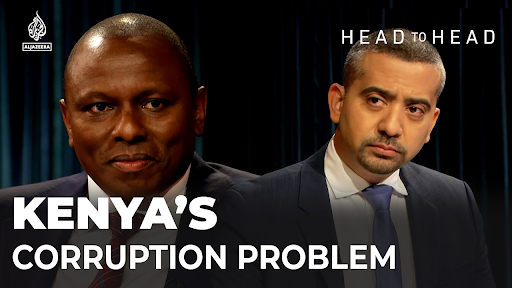The Ksh1.3 Trillion Withdrawals: A Wake-Up Call for Financial Transparency in Kenya
Recent revelations that Ksh1.3 trillion was withdrawn manually from Kenyan government accounts have sparked concerns about public financial management, transparency, and the challenges of transitioning to automated systems. The incident raises crucial questions about oversight, accountability, and the future of Kenya’s financial infrastructure.
Key Issues:
1. Manual Withdrawals and Lack of Transparency
The sheer volume of manual withdrawals highlights potential risks, including errors, fraud, and a lack of accountability. The Controller of Budget (CoB) has expressed concerns about lump-sum requisitions, which make it difficult to track expenditures effectively. Without detailed transaction records, it becomes challenging to ensure proper use of public funds. If these funds were used for projects, they should eventually be credited back into the banking system when contractors and suppliers receive payments. The real question is: where did the money go, and why is there limited visibility on its movement? The lack of transparency directly affects service delivery, as misappropriated funds can lead to underfunded healthcare, education, and infrastructure projects, deepening poverty and inequality.
2. Systemic Weaknesses and Transition to Automation
The shift from manual to automated financial systems is a positive step toward efficiency and oversight. However, the phased approach—excluding key transactions like debt payments and county transfers—indicates the complexity of such transitions. This incident highlights systemic weaknesses in Kenya’s financial management framework, including outdated processes and controls that allow gaps in oversight. Full integration of all financial processes into the new system is essential to achieving true transparency. Additionally, devolution has introduced financial opacity at the county level, making standardized reporting and public participation in budgeting more critical than ever.
3. Controller of Budget’s Oversight Role
The CoB plays a crucial role in reviewing and approving government transactions to ensure compliance with public finance regulations. The tension between the CoB’s concerns and the National Treasury’s assurances underscores the importance of maintaining independent oversight bodies that can scrutinize financial decisions without political interference. Strengthening the CoB’s role with more proactive auditing capabilities is essential. The media and civil society organizations also play a vital role in amplifying transparency efforts, and their protection is necessary to ensure accountability.
4. Political Will and Public Trust
Maintaining public trust in government financial management is crucial. The National Treasury’s assurances of transparency and commitment to providing a comprehensive response are steps in the right direction. However, restoring confidence requires not just technical solutions but also a strong commitment to open communication and accountability. Political will is necessary to enforce financial reforms and ensure independent oversight bodies have the power and resources to function effectively. Additionally, civic education is essential to help the public understand financial documents and demand better governance.
5. Importance of Clear Audit Trails
An effective financial system must allow for clear tracking of funds from requisition to expenditure. Establishing a transparent audit trail is vital to preventing corruption and ensuring that public funds are used effectively. The ability to follow the money and verify payments is critical for accountability. International best practices, such as open contracting and real-time public expenditure tracking, can serve as valuable models for Kenya to adopt.
How Kenya Can Strengthen Financial Transparency:
1. Real-Time Financial Transparency
Move towards real-time disclosure of government financial transactions through public dashboards.
Publish transaction data on a public portal to allow citizens to monitor spending.
Leverage technology to provide accessible, detailed reports for the public.
2. Strengthening the Role of the Controller of Budget
Ensure the CoB’s independence and provide adequate resources for proactive audits.
Grant the CoB more authority to flag irregularities before funds are withdrawn.
Encourage collaboration between the CoB, civil society, and investigative journalists to expose financial mismanagement.
3. Enhancing Internal Controls
Implement robust internal control mechanisms within government agencies to prevent fraud and errors.
Regularly review and update internal control procedures to address emerging risks.
Standardize financial reporting at both national and county levels to ensure uniformity and accountability.
4. Leveraging Technology for Transparency
Explore the use of blockchain technology for increased security in financial transactions.
Utilize data analytics to identify patterns of potential fraud or mismanagement.
Enforce the use of standardized digital formats for all financial transactions to simplify auditing.
Encourage the youth to develop and use digital tools for tracking government spending and reporting irregularities.
5. Legislative Reforms and Whistleblower Protection
Review and strengthen existing public finance laws to align with best practices.
Enact laws that promote transparency and accountability in government spending.
Implement and strengthen whistleblower protection laws to encourage reporting of financial misconduct.
Adopt international frameworks for financial transparency to align Kenya with global best practices.
6. Promoting Citizen Participation
Engage citizens in the budget process through public consultations and feedback mechanisms.
Support initiatives that empower citizens to monitor government spending and hold officials accountable.
Educate the public on how to interpret government financial reports to increase civic engagement.
Conclusion
The Ksh1.3 trillion withdrawals highlight the urgent need for Kenya to modernize its financial management systems. While the transition to automation presents challenges, it is a necessary step toward greater transparency, accountability, and efficiency. However, true reform requires more than technology—it demands systemic change, political commitment, and active public participation. By strengthening oversight, enforcing transparency measures, adopting best practices in financial governance, and empowering citizens—especially the youth—Kenya can build a more accountable and resilient financial system.
What are your thoughts on this issue? How can Kenya strengthen financial transparency? Share your views in the comments below!
.jpg)

.jpg)
.jpg)
.jpg)
.jpg)
.jpg)
.jpg)
.jpg)
.jpg)
.jpg)









.jpg)

